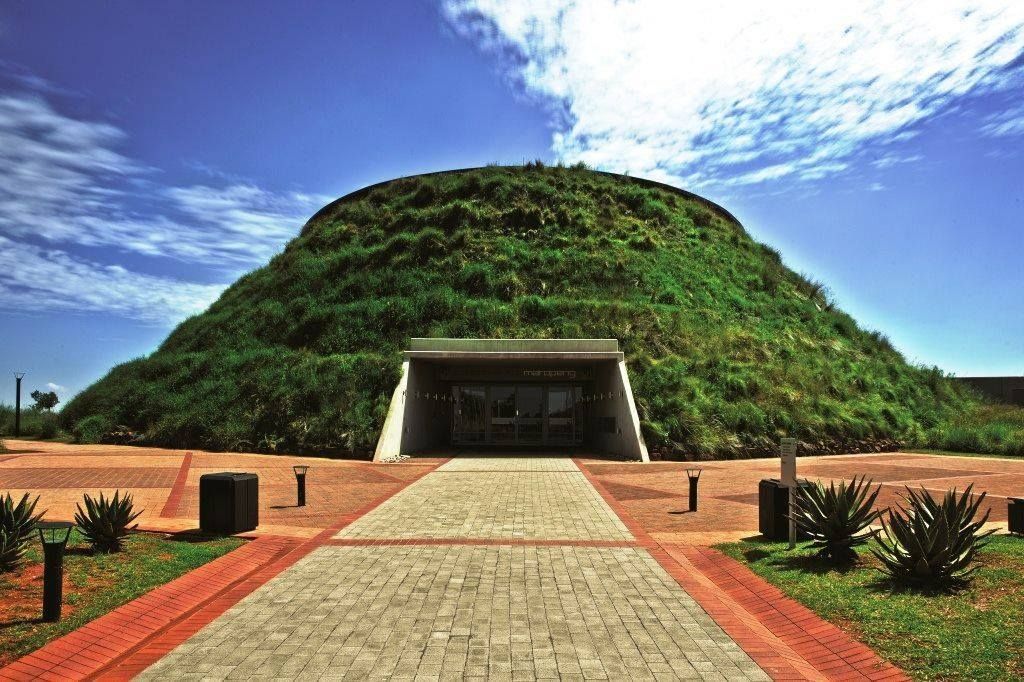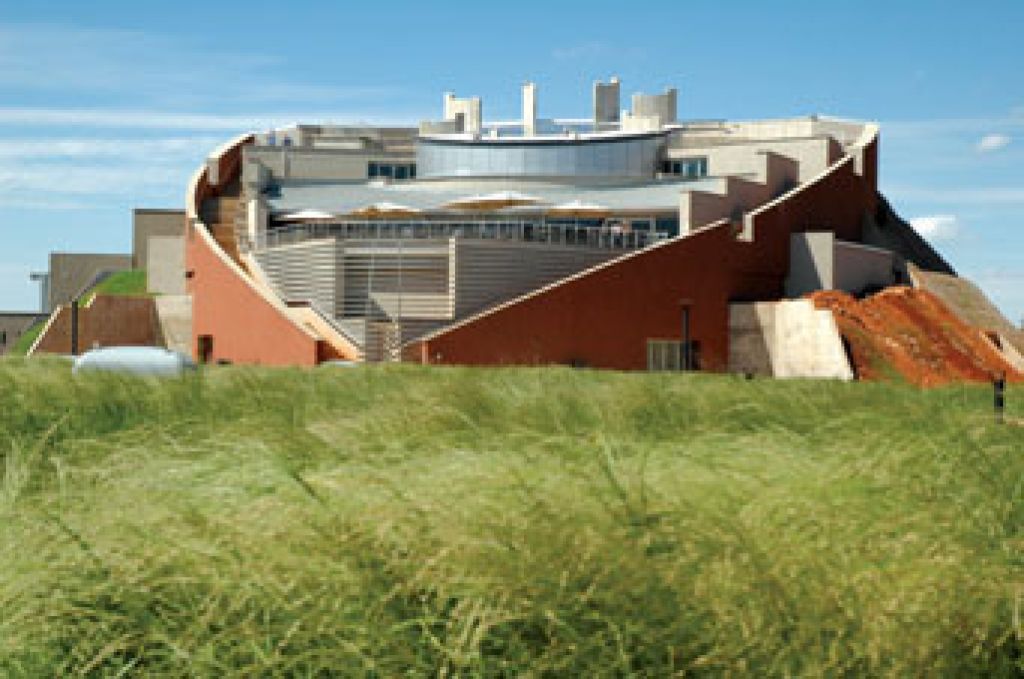Discovering Maropeng’s architecture

Chris Kroese of GAPP Architects says of the design process, “We were asked to provide certain features like a hotel, a museum, a conference centre, restaurants, etc, and were free to conceptualise that. Working with a palaeontological theme, we literally went underground, so that, when you drive up to the site, you see almost nothing. The idea is that you are on a journey of discovery and stumble upon things as you progress.”
The marketplace where you buy your tickets and a grassed amphitheatre that accommodates 10 000 people are sunken into the grounds around the Maropeng Visitor Centre, housed in the Tumulus Building. The Tumulus Building is evocative of a giant burial mound or perhaps an enormous buried fossil, with concrete “bones” sticking out the top. There is a learner centre and a hotel inside the development, which are mostly hidden in the rolling hills. All these aspects of Maropeng encourage the visitor to discover more, to dig deeper as a palaeoanthropologist would while looking for fossils embedded in rock, to find Maropeng’s many diverse aspects.
As you walk through the exhibition itself, you move in a journey of discovery from the beginnings of the world, through the history of humankind, right into the future. As you emerge, you discover one of the best views in Gauteng.

When you first see the tumulus, it looks like a giant burial mound. “You enter the building as ants would enter an ant heap, or bees a hive,” says Kroese.
At the end of the exhibition, when you turn and see it again from the back, it’s totally transformed – it’s silver, grey and glass, hi-tech and futuristic. “The idea is that we haven’t come to the end of history – we are in the middle of a bigger picture,” continues Kroese.
Similarly, the underground museum is built in a slight arc, as if it were a piece cut out of a mega-dial. The double-spaced columns are like markings on a time dial, once again reminding people that we are living in but a moment of time.
“The design process was a complex one because there were so many stakeholders – government, private, academic. We wanted to create a fantasy world but at the same time be true to the academic context. I had to be more than an architect – I had to be a sociologist, in a sense.
“It was an interesting process, exhausting and frustrating at times, but ultimately very satisfying,” he continues.
“Nowhere else does architecture like this exist. It is a complete blend of building and landscape, not just a set of buildings on a site.”
The Tumulus Building and its sister site, the Sterkfontein Caves Visitor Centre, nearby, were recently featured in the first edition of the Phaidon Atlas of 21st Century World Architecture, published in 2008.